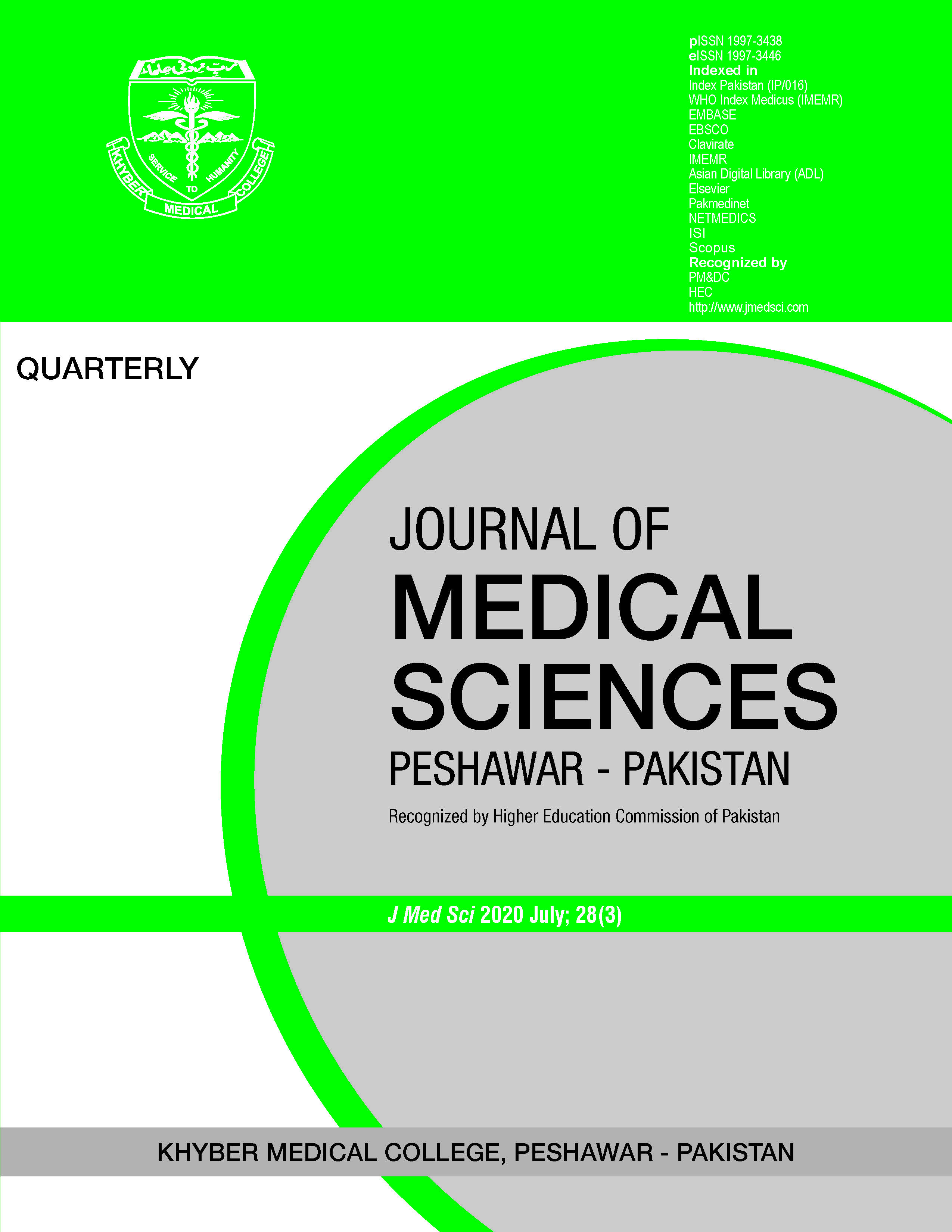EFFECTIVENESS OF COMBINATION THERAPY WITH SOFOSBUVIR AND DACLATASVIR IN HCV INFECTED PATIENTS
Main Article Content
Abstract
Introduction
HCV is global challenge with an alarming worldwide prevalence of 2.5%. Overall Prevalence in Pakistan unfortunately stands at 6.4%. Its treatment has seen tremendous advancement in the last three decades. From its conventional initial six month Interferon ? based combination therapy including Ribavirin which was associated with multiple complications and incompliance relating to its parenteral administration, the treatment has evolved to more efficacious, less time consuming (usually 3 months) and easily tolerated Direct Acting Antiviral drugs (DAAs) based treatment regimen with better clinical safety profiles. Among the DAAs after their successful initial single drug based use more evidence is emerging at the even better results with their combination therapy. The combination of Sofosbuvir and Daclatasvir as a three month regimen is one such approach that has demonstrated an excellent efficacy of more than 95% in term of SVR12.
Objective of Study: To determine the effectiveness of combination therapy with Sofosbuvir and Daclatasvir in HCV infected patients presenting to Tertiary Care Teaching Hospitals of Khyber Pukhtunkawa.
Materials and Methods
This prospective observational study spanned over a period of six months from January 2019 till June 2019 in the three Tertiary Care Teaching Hospitals of Khyber Pakhtunkhwa; two in Peshawar and one in Mardan. A total of 255 patients having genotype3 HCV infection with confirmed by were included who were later administered the combination therapy. Baseline data including clinical, laboratory and imaging information of all patients were recorded. Only Genotype 3 HCV was included in the study. These patients were given standard dose Sofosbuvir (400mg) and Daclatasvir (60mg) regimen for 12 weeks. SVR12 was observed by repeating the RT-PCR for HCV at another 12 weeks after the completion of treatment.
Results
Among 255 patients included in this study, 108(42.35 %) were male and 147 (57.64 %) were female and thus a Male to female ratio of 1: 1.36 was noted. Mean age of the patients was 42.23 ± 11.9 years. Majority of the patients (80; 31.4%) were in the age group 31-40 years. Among the study sample 200 patients (78.4%) were treatment naïve and 55 patients (21.6%) were treatment experienced with either Interferon or single DAAs or both Out of these total 255 patients who completed the study 249 patients (97.6%) achieved SVR12 (declared as responders) and 06 patients (2.4%) failed to achieve Virologic response (declared as non-responders). In the non-responding category were 03 male (50%) and 03(50%) female patients. Incidentally all the non-responders had evidence of compensated Chronic Liver Disease (liver fibrosis on ultrasound, without any clinical features of Cirrhosis Liver) even before the treatment. The response to treatment in both treatment naïve and treatment experienced categories was clinically and statistically significant.
Conclusion
The standard three month Combination therapy with Sofosbuvir and Daclatasvir for the treatment of HCV showed better efficacy in term SVR12 among the Genotype 3 HCV positive patients in Khyber Pakhtunkhwa in Peshawar. The recommended regimen is better result oriented, well tolerated and is associated with fewer adverse effects when compared with other latest available treatment protocols.
Article Details
All articles published in the Journal of Medical Sciences (JMS) are licensed under the Creative Commons Attribution 4.0 International License (CC-BY 4.0). Under the CC BY 4.0 license, author(s) retain the ownership of the copyright publishing rights without restrictions for their content, and allow others to copy, use, print, share, modify, and distribute the content of the article even for commercial purposes as long as the original authors and the journal are properly cited. No permission is required from the author/s or the publishers for this purpose. Appropriate attribution can be provided by simply citing the original article. The corresponding author has the right to grant on behalf of all authors, a worldwide license to JMS and its licensees in all forms, formats, and media (whether known now or created in the future), The corresponding author must certify and warrant the authorship and proprietorship and should declare that he/she has not granted or assigned any of the article’s rights to any other person or body.
The corresponding author must compensate the journal for any costs, expenses, or damages that the JMS may incur as a result of any breach of these warranties including any intentional or unintentional errors, omissions, copyright issues, or plagiarism. The editorial office must be notified upon submission if an article contains materials like text, pictures, tables, or graphs from other copyrighted sources. The JMS reserves the right to remove any images, figures, tables, or other content, from any article, whether before or after publication, if concerns are raised about copyright, license, or permissions and the authors are unable to provide documentation confirming that appropriate permissions were obtained for publication of the content in question.

